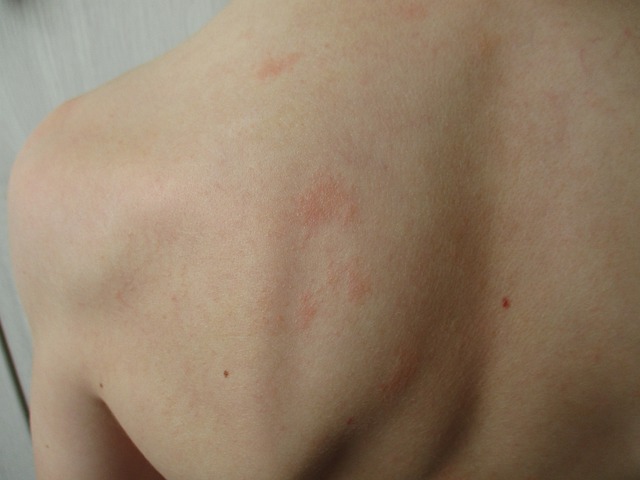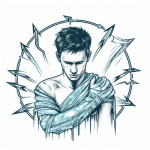Shingles is a viral infection that affects millions of people worldwide. It is caused by the varicella-zoster virus, which also causes chickenpox. Shingles is often referred to as a silent epidemic because it is not well-known or understood by many people. However, it can have a significant impact on those who are affected by it. In this article, we will explore what shingles is, who is at risk of developing it, its symptoms, treatment options, complications, prevention methods, and the impact it has on millions of people.
What is Shingles?
 Shingles is a viral infection that affects the nerves and skin. It is caused by the varicella-zoster virus, which also causes chickenpox. After a person recovers from chickenpox, the virus remains dormant in their nerve tissue. Later in life, the virus can reactivate and cause shingles. The virus travels along the nerve fibers to the skin and causes a painful rash.
Shingles is a viral infection that affects the nerves and skin. It is caused by the varicella-zoster virus, which also causes chickenpox. After a person recovers from chickenpox, the virus remains dormant in their nerve tissue. Later in life, the virus can reactivate and cause shingles. The virus travels along the nerve fibers to the skin and causes a painful rash.
The rash usually appears as a band or strip on one side of the body or face. It can be accompanied by itching, burning sensation, and blisters filled with fluid. The rash typically lasts for 2-4 weeks and can be very painful.
Who is at Risk of Developing Shingles?
Anyone who has had chickenpox can develop shingles later in life. However, certain factors increase the risk of developing shingles. These include age, weakened immune system, and previous chickenpox infection.
Shingles is more common in older adults because their immune system weakens with age. People with weakened immune systems due to medical conditions such as HIV/AIDS or cancer are also at higher risk of developing shingles. Additionally, individuals who have had chickenpox before the age of one are more likely to develop shingles later in life.
Symptoms of Shingles
The most common symptom of shingles is a painful rash that appears as a band or strip on one side of the body or face. The rash can be accompanied by itching, burning sensation, and blisters filled with fluid. Other symptoms may include fever, headache, fatigue, and sensitivity to light.
The pain associated with shingles can be severe and debilitating. It can last for weeks or even months after the rash has healed. This condition is known as postherpetic neuralgia and can be very difficult to treat.
Treatment Options for Shingles
There are several treatment options available for shingles. Antiviral drugs such as acyclovir, valacyclovir, and famciclovir can help reduce the severity and duration of the rash. Pain relievers such as acetaminophen, ibuprofen, and opioids can help manage the pain associated with shingles.
Topical creams containing capsaicin or lidocaine can also provide relief from pain and itching. In severe cases, corticosteroids may be prescribed to reduce inflammation and swelling.
Complications of Shingles
Shingles can lead to several complications, especially in older adults or people with weakened immune systems. Postherpetic neuralgia is a common complication that causes persistent pain even after the rash has healed.
Shingles can also affect the eyes and cause vision loss if left untreated. In rare cases, shingles can lead to bacterial skin infections that require medical attention.
Prevention of Shingles
The best way to prevent shingles is to get vaccinated. The shingles vaccine is recommended for adults over 50 years old and is highly effective in preventing shingles and its complications.
Maintaining a healthy lifestyle by eating a balanced diet, exercising regularly, getting enough sleep, and managing stress can also help boost the immune system and reduce the risk of developing shingles.
Avoiding contact with infected individuals and practicing good hygiene such as washing hands frequently can also help prevent the spread of the virus.
The Impact of Shingles on Millions of People
Shingles is a common condition that affects millions of people worldwide. In the United States alone, it is estimated that one in three people will develop shingles in their lifetime.
The physical, emotional, and financial impact of shingles can be significant. The pain associated with shingles can be severe and debilitating, making it difficult for individuals to carry out daily activities. The emotional toll of shingles can also be significant, as it can lead to anxiety, depression, and social isolation.
The financial impact of shingles can also be significant, as it can lead to medical expenses and lost productivity. In severe cases, hospitalization may be required, leading to even higher medical costs.
Shingles is a viral infection that affects millions of people worldwide. It is caused by the varicella-zoster virus and can lead to a painful rash, postherpetic neuralgia, vision loss, and skin infections.
Prevention methods such as vaccination and maintaining a healthy lifestyle can help reduce the risk of developing shingles. If you suspect you have shingles, seek medical attention immediately to receive appropriate treatment.








